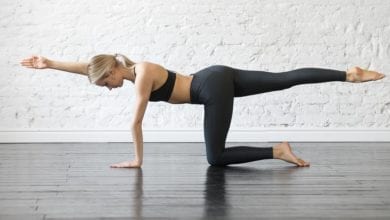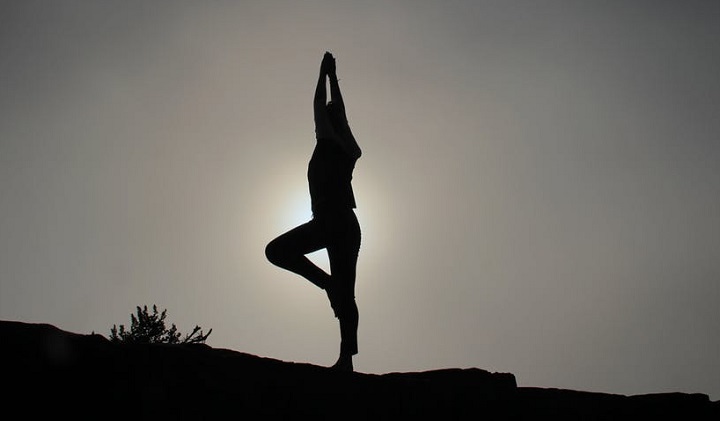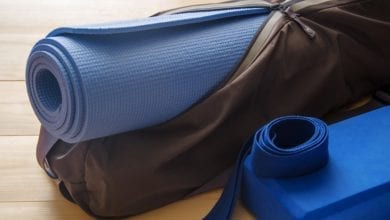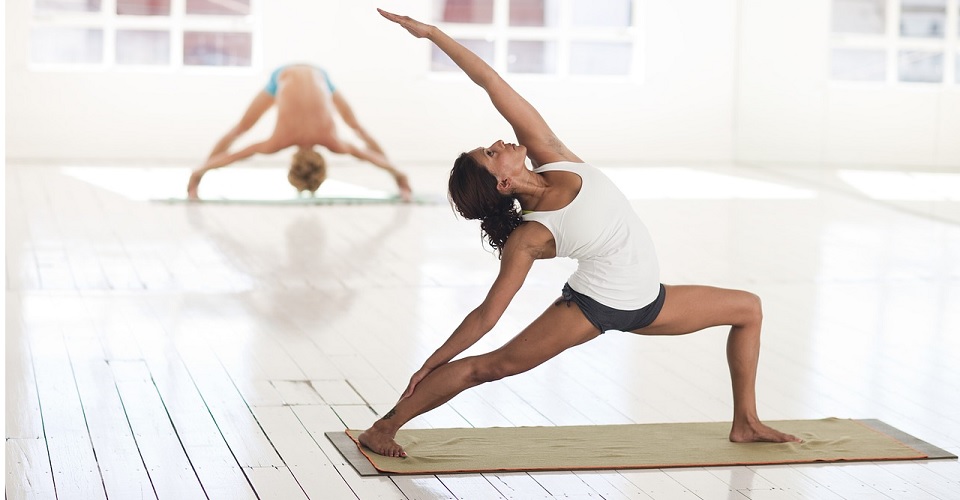
Our Editors independently research, test, and rate what we feel are the best products. We use affiliate links and may receive a small commission on purchases.
Hot Yoga, also known as Bikram Yoga is ‘yoga with a twist’. Just as the name suggests, practitioners are placed in a warm room for their usual yoga routine.
The reason hot yoga has become a popular yoga option—with most yoga studios offering a wide selection of slots—is that it pushes yogis to the next level of physical fitness.
Hot yoga is a relatively recent development in the world of yoga, originating in the 1970s when famed yogi Bikram Choudhury introduced it as a result of his observations of Japanese yoga students who would take breaks in saunas.
He started at 82 degrees Fahrenheit and gradually increased the temperature in his classes until he found his magic number: 104 degrees Fahrenheit.
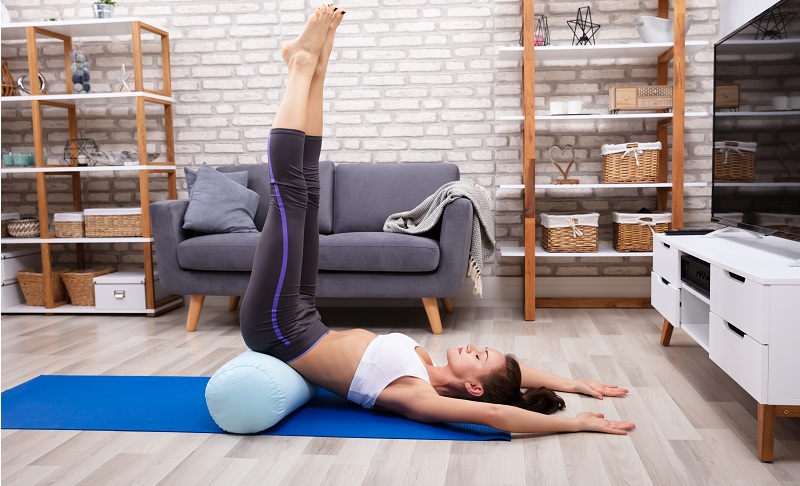
What Is Hot Yoga?
Hot rooms aside, yoga has a rich history, as a practice that helped ancient monks better withstand long periods of meditation. It transferred to the western world with yogis like Bikram Choudhury in the mid-20th century and filtered from Hollywood royalty all the way down to studios across the United States.
Yoga contains a deeply spiritual component that encourages the mind and emotions to engage with physical movements, in order to make the whole body flexible.
Many Americans who practice yoga skip the spiritualism and focus on the physical benefits. Yoga can be adapted to many purposes, including relaxation, stretching, and muscle strengthening.
Hot yoga takes the physical aspect of yoga to another level. It is different from regular yoga in that it requires extra physical effort and increased attention to your body’s abilities.
All in all, there are more differences between normal yoga and hot yoga than just temperature. In a typical ‘hot yoga class, you can expect to experience the following:
- A temperature of 104 degrees Fahrenheit (40 degrees Celsius)
- Faster pace
- A goal of increasing the heart rate
- A goal of pushing the body further
- Restriction to 26 poses
- Focus on all muscle groups
- An assumption of reasonably good health for all participants
- Forceful breathing
- Need for extra equipment to manage increased sweat
- A mindset of pushing your body rather than simply stretching
Bikram Yoga Benefits
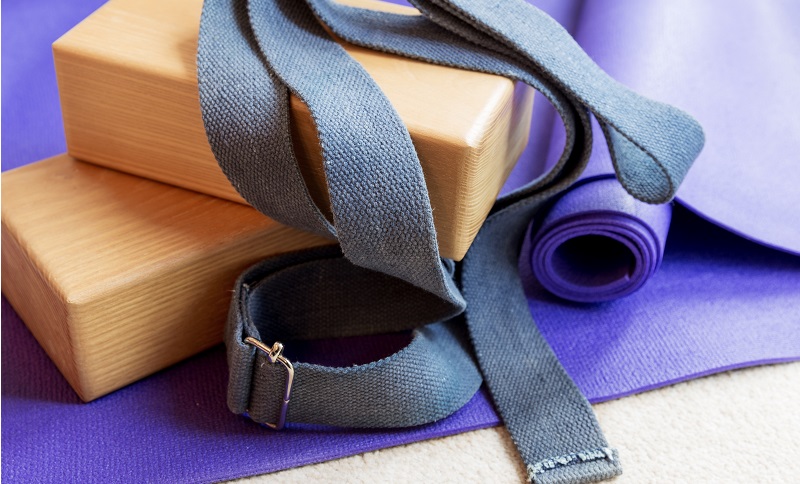
Hot yoga has a few extra on top of the average benefits received by yogis. For one, hot yoga makes you sweat. The benefits of sweating during exercise are numerous.
It increases your secretion of toxins like excess salt, cholesterol, and other contaminants that tend to block pores and create pimples. The purge of excess salt through sweating is a way to get rid of salt while retaining calcium, a process which can prevent kidney stones.
One surprising benefit of sweating is that it activates a natural antibiotic on your skin that attracts and eliminates bacteria.
Another benefit of hot yoga is that warms up your muscles, allowing you to deepen the poses and increase your flexibility. The warmer your muscles, the greater safety there is in leaning into your stretches.
If you push cold muscles too hard, you can pull them. Gradually building your intensity during a hot yoga workout keeps the muscles warm and paves the way for full achievement of normally difficult poses.
Hot yoga also elevates your heart rate, which is of course a byproduct of cardiovascular exercise, and has many known benefits. Cardio is a necessary part of our daily lives because it reduces obesity, improves the health of your heart, widens the scope of your metabolism, and helps you recover faster from workouts and injuries.
Cardio also releases endorphins, also known as a “runner’s high”, which is why you feel so good on the way home from a session.
Hot yoga strengthens muscles in a more intense way than normal yoga, it tones up flabby muscles and skin, and it makes you much more flexible. On top of all of this, the heat actually helps your body relax during your workout, which in turn improves your breathing and mental focus—and reduces general anxiety and depression.
Things To Keep In Mind When Starting Hot Yoga
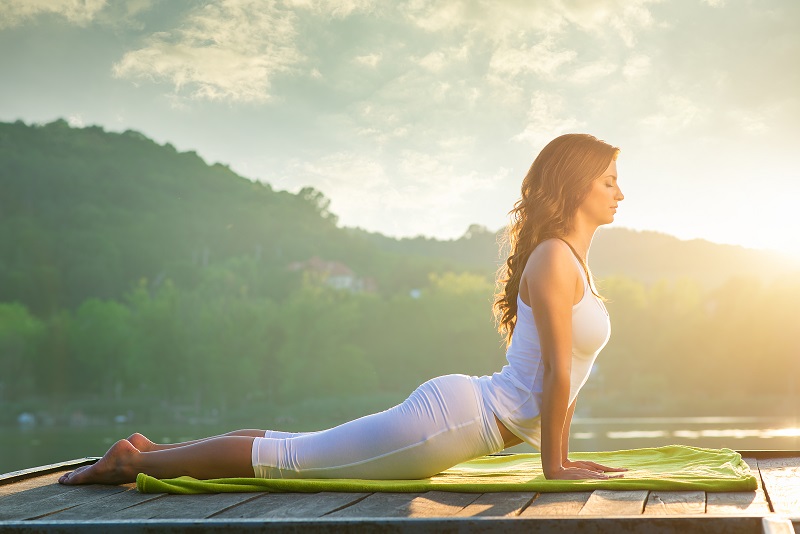
As with any new fitness routine, there are things to keep in mind so that you start with a good experience. With hot yoga, this is especially important, due to the increased intensity is so different from regular yoga.
Avoid eating right before a class. Treat hot yoga just as you would any other fitness class, where having heavy food on your stomach is liable to make you want to vomit. Although you do need fuel to sustain you through an intense hot yoga class, give your body time to digest food before jumping into a hot room and unrolling your mat.
Just as you should avoid much food, you should be consuming more water. Drinking is important, not right before class starts– but hours before. Drink water consistently throughout a day that ends with a hot yoga class to prepare your body for the extra sweat that you will be expending. It is essential to rehydrate after class, as well.
Keep in mind that instructors vary and you might not like the first one you encounter. If you don’t like your first class, consider that it may the instructor that you don’t like rather than the hot yoga experience itself. You can always find another instructor if you otherwise enjoyed intensifying your yoga workout.
Be aware that there are some different sound effects in hot yoga than you encounter in other yoga classes. In particular, participants employ forceful breathing to enhance the poses, which can get quite loud in a large group.
The vocabulary can also seem a little strong on “new age” terminology, like instructors asking you to “ohm” in meditation or send your energy to other participants. Although you do not have to take part in these aspects, they might increase the benefits of the workout by making you more relaxed.
Hot yoga has an increased risk of injury over regular yoga because of its intense nature, so being aware of the risks before going in can help you prepare and prevent any adverse effects.
Practicing Hot Yoga Safely
Since there are increased risks of injury in hot yoga, it is wise to take some precautions, particularly by acknowledging any physical limitations you have and assessing if you are a good candidate for the program, based on possible risks or medical concerns.
For example, you should not take part in a hot yoga session if you are pregnant. Children should not participate in hot yoga, as the increased heat is not good for them. If you are over age 60 and have not engaged regularly in yoga, hot yoga should be avoided.
You should also reconsider hot yoga if you have any medical conditions such as diabetes, heart problems, high or low blood pressure, or are prone to dizzy spells. If you have any concern over possible risks, consult your doctor before attending a class.
In the midst of a hot yoga session, you may begin to experience symptoms of overexertion or overheating. If you feel at all dizzy, stop and take deep breaths. If you start to see spots or feel extremely warm or out of breath, you should also take a break, by leaving the room or stretching.
To prevent such symptoms, pay attention to your body and not push yourself as hard as the instructor might encourage, especially if you are a beginner. Instructors usually advise participants to gauge their own workout.
Finally, there is a lot of sweat involved. For this reason, it is very important to hydrate immediately after a hot yoga session, just as would be advisable after any other cardio workout.
Water is needed to replenish your water supplies after the excessive sweating of a hot yoga workout. A towel, gripping yoga socks, and tight clothing are also important to prevent slipping and overheating.
How To Get Started With Bikram Yoga
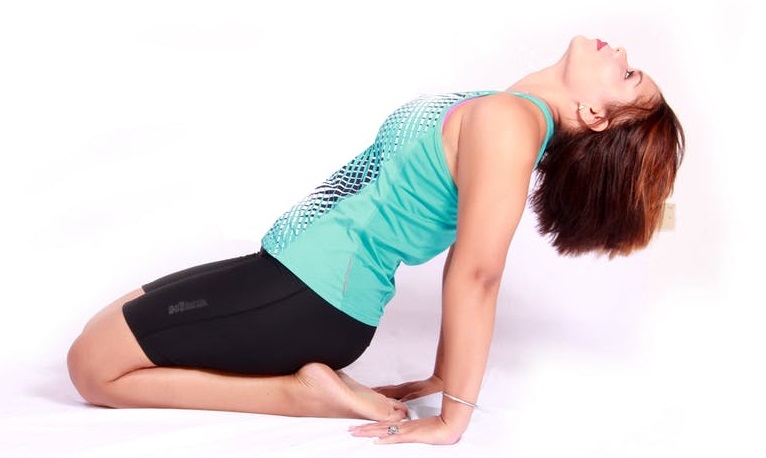
To get started with hot yoga, you should first select a class from your preferred gym location. This can be at a local YMCA, a yoga studio, or even a specialized hot yoga studio.
There are actually different types of hot yoga, ranging from Bikram style (which restricts the number of poses to 26) to Moksha yoga, which employs “green” components such as sustainable flooring in the studio.
You should also get familiar with yoga etiquette in order to more quickly integrate into the hot yoga setting. Doing things like arriving early, remaining silent upon entering a class session, not talking to friends during the workout, turning off your cell phone, and sitting at the back if you are unfamiliar with the way things work, will combine make your first class go well.
The difference between beginner and advanced hot yoga is more of a difference in intensity. Most hot yoga classes can be reduced to beginner simply by not pushing yourself as hard, although some poses are better for advanced students than beginners.
For example, an advanced class might have inversions, arm balances, and splits, while a beginner class might focus on the half versions of these.
If you are serious about maintaining hot yoga as a lifestyle, buying your own mat and towel is a good idea. As you dive into the practice of hot yoga, you may become enthralled with its numerous benefits.
You should also be sure to bring a large, absorbent towel to place on your mat. The large amount of sweat makes even the stickiest yoga mat slick, and a towel provides needed traction. There are special super-absorbent towels that you can purchase to make the hot yoga experience even better.
Clothes are a very important in hot yoga because of all the sweat and heat you generate. You should wear tight-fitting rather than loose clothes, as extra fabric traps heat. Apparel, such as sports bras, spandex shorts or leggings, and tank tops are appropriate. Make sure you can tie your hair back, and brining a sweat band for your head will and comfort during your workout.
Be sure to have access to the following for any level of hot yoga, from beginner to advanced:
- Water bottle
- Mat
- Absorbent towel
- Yoga socks or shoes
- Tight athletic clothes
- Empty stomach
Yoga socks are often overlooked by the beginner. In hot yoga classes they provide two important qualities: a non-slip bottom, to prevent you from falling in a puddle of sweat and hygiene protection in the yoga studio. These yoga socks provide an excellent combination of safety and hygiene to optimize your experience.
What To Wear To Hot Yoga
Lupo Women’s Essential No Slip Crossover Yoga Pilates Socks
This powerful no-slip yoga sock combines fashion with performance in a durable cotton/nylon blend. Elastic straps cross over the tops of your feet in a Mary Jane style for added positioning, a useful feature in the fast-paced setting of a hot yoga class.
The heel is specially designed and enforced with elastic to prevent slippage during a workout, and the non-grip pads on the bottom are swirled in a pretty pattern for fun while staying firmly on your mat.
This yoga sock is ideal for users who want to keep their feet from slipping without having to worry about the socks coming off. The socks are available in a variety of colors, including lilac and mystic blue.
Cosfash Non Slip Skid Yoga Pilates Barre Socks with Grips
No one wants to slip during a hot yoga class. It is embarrassing and painful. That is where these yoga toe socks with rubber grips come in. Slide on these organic cotton blend socks to cover your entire foot to the ankle, keeping the sock from slipping during any sweat-inducing hot yoga routine.
The rubber grips are dotted in an ergonomic design over the entire foot, and the colors are neutral enough for both men and woman.
These socks are especially desirable for their antimicrobial feature. If you want to protect your feet from sweaty yoga floors, these socks will do the trick. They will also eliminate odor-causing bacteria in your own feet. To top it off, they come with a lifetime warranty.
Great Soles – Non Slip Grip Yoga Socks
Yoga grip socks should be part of any serious hot yoga ensemble, and these basic non-slip socks will do the trick. Arriving as a set of two pairs, these dotted grip socks are made of a cotton-polyester-elastic blend that can withstand the rigors of hot yoga on a regular basis.
In fact, there are hundreds of gripping dots for added slippage protection, helping you feel secure both on the floor and mat. They are toe socks, and the full-foot covering adds protection from the bacteria of others’ bare feet.
These yoga socks are lightweight, provide arch support, and have a fitted heal so that you do not have to think about your feet on top of all the other new things you will do for the first time in a hot yoga class. They come in three colors: purple, pink, and blue.
It’s Time to Begin
Hot yoga is a fun way to work with others toward a common goal of intense fitness. You can combine the perks of yoga—like flexibility and stretching—with the benefits of intense cardiovascular exercise in a classroom setting that simulates the heat of a summer afternoon in India.
Knowing what to expect and how to prepare are your best introduction to a successful experience with hot yoga, an exercise that will make you strong, flexible, and fit.
You will need an absorbent towel, here are my favorite towels for hot yoga, a comfortable pair of yoga pants will be invaluable, here are my recommended yoga pants, and lastly a yoga mat bag is handy to carry your yoga equipment.


